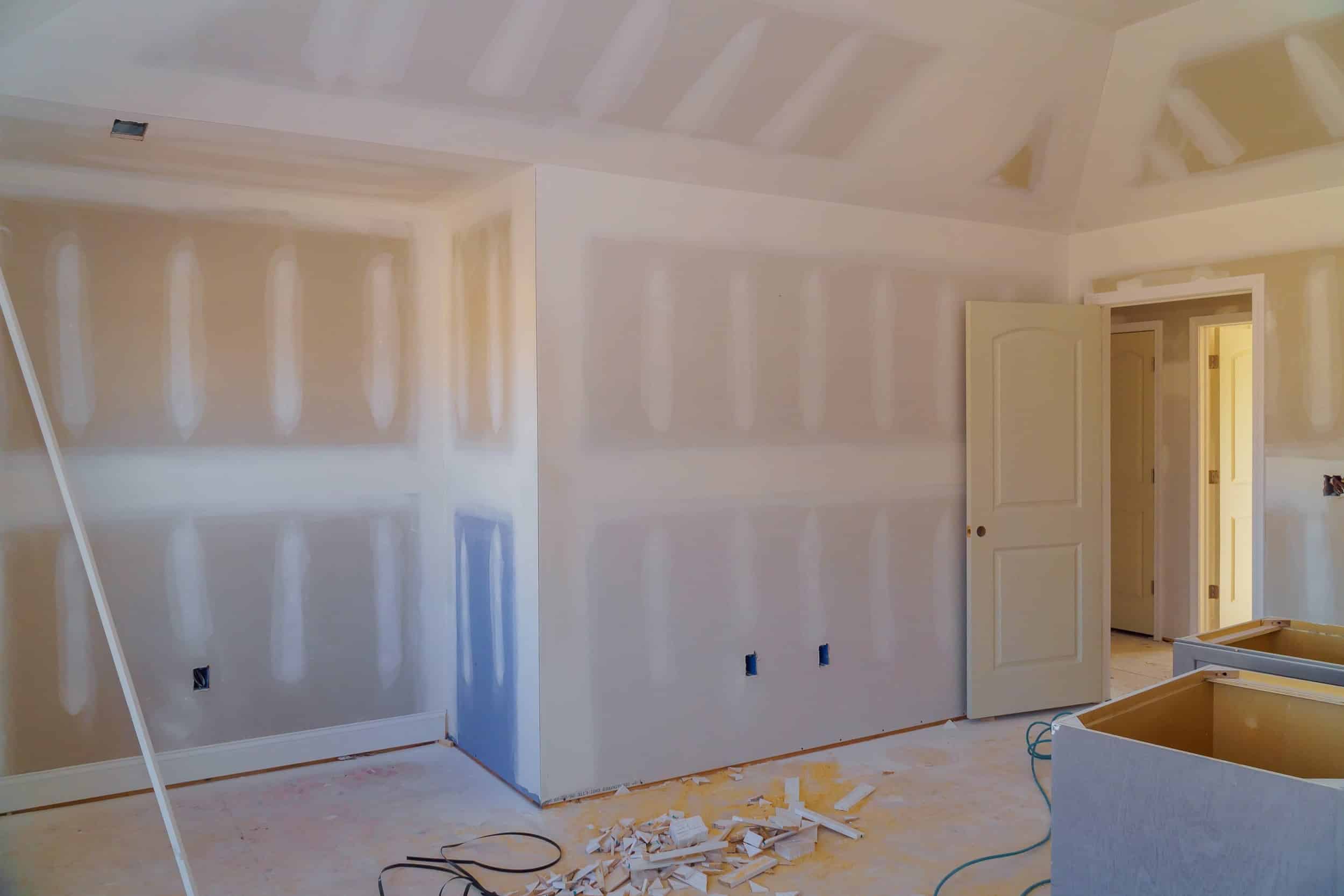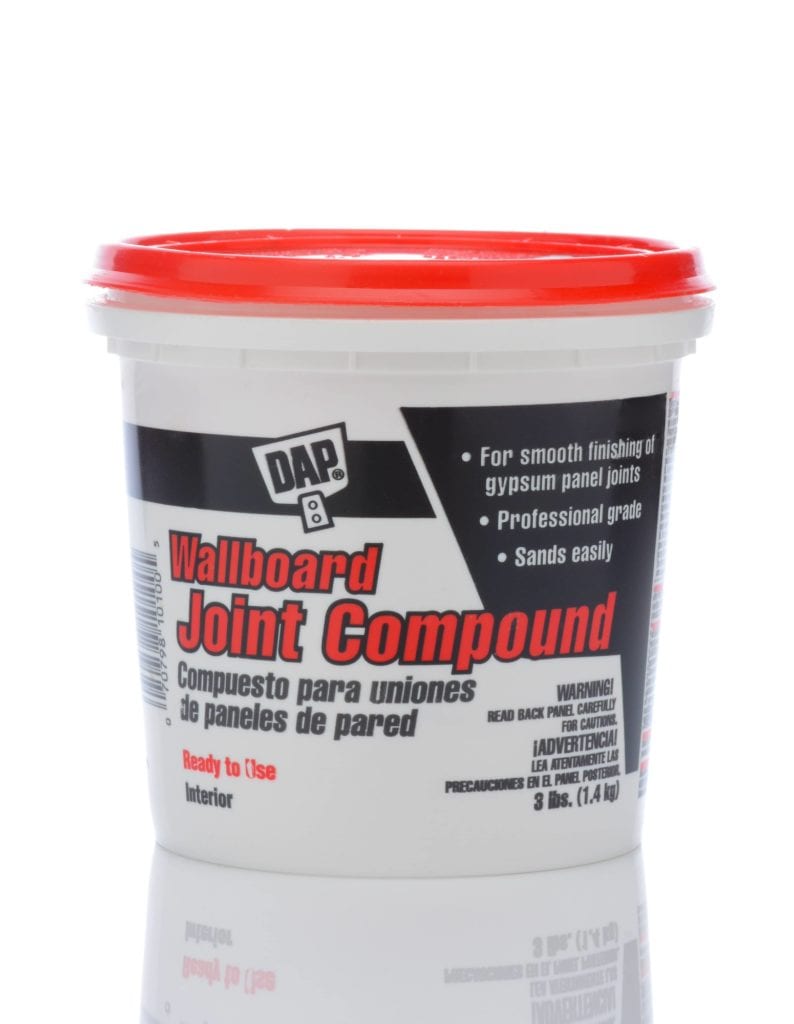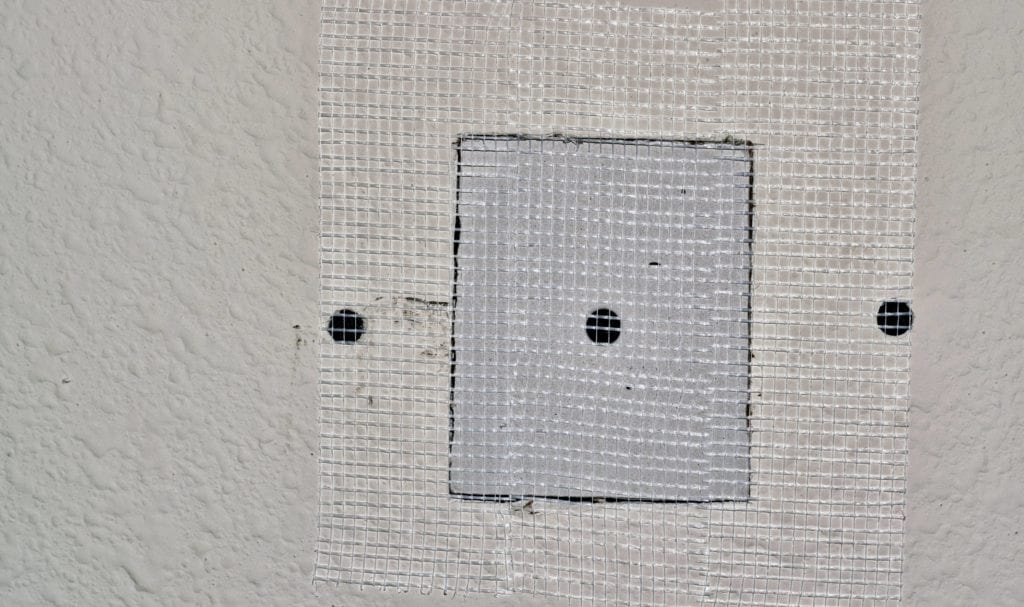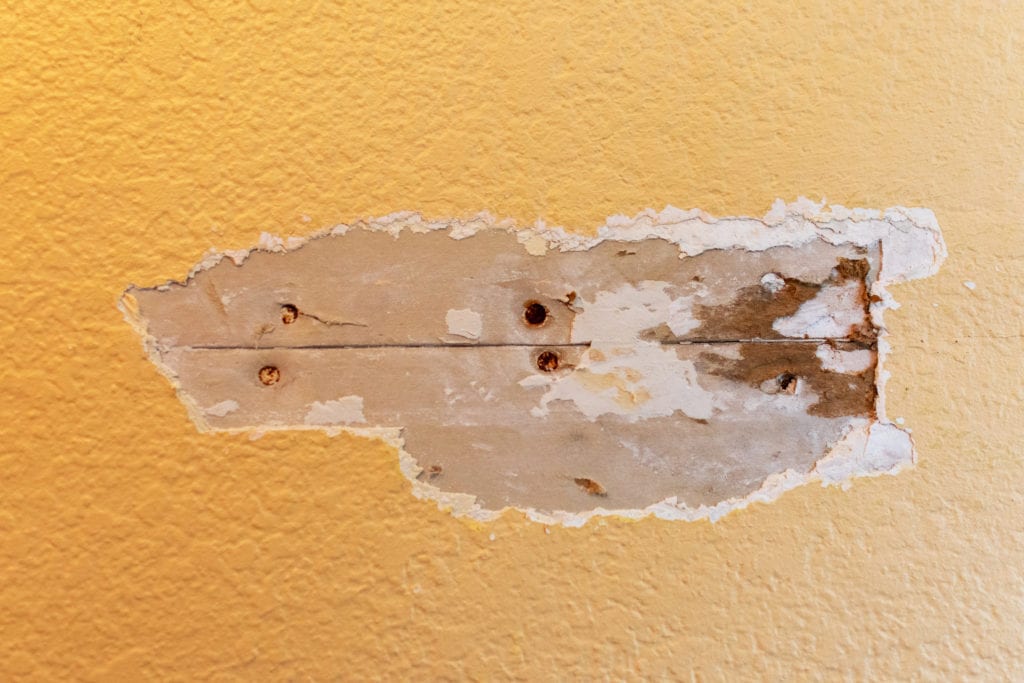
Joint compound and spackle look a lot alike and many people think they work the same. Yes, they are both used in the home for wall repair, fixing imperfections, or construction. But how do you know when to use joint compound vs. spackle?
Well, it will depend on the size of the project. Joint compound is used in smaller areas while spackle is used for larger projects. Let’s take a look at what these products are, the similarities and the dry time, shrinkage, and size of the project.
Joint Compound
Made of gypsum dust, it is a lot like frosting for a cake when mixed. It can also be bought in a pre-mixed tub. Contractors call it “mud” or “drywall mud.”
Spackle
Comprised of gypsum powder and binders, it is like toothpaste and sold in a pre-mixed tub container.
Uses of Joint Compound and Spackle
Joint Compound is used to hang drywall. When the gypsum boards are hung on the frame of the inside of the home, the boards are taped between the seams and the tape is covered with joint compound to hold it together. The joint compound comes in 1 quart to 5-gallon sizes.
Two Types of Joint Compound Tape
- Paper spooled joint compound on a roll– This is a favorite of contractors.
- Fiberglass mesh with adhesive applied to it – This is what most DIY’ers use.

Four Types of Joint Compound
1. All-Purpose
This is for patching up holes.
2. Topping Compound
This requires taping compound of two dry coats spread on the wall.
3. Taping Compound
This is used for the first and second coat of taping compound
4. Quick-Setting Compound
Made for deeper holes and wide cracks, sets, and dries faster
Keep in mind that the more joint compound you put on, the more you have to sand down.
You might be wondering when you will be working with drywall, but unfortunately, if there was a fire in the home, the drywall must be replaced due to smoke damage and you will be using joint compound to hold the boards together.

Spackle
Spackle is used to fill in dings and dents like holes in the wall, nail holes, or where you tried to hang a ceiling fan and put it in the wrong place. When working with the drywall, make sure you are using anchors that can hold the weight so you are not removing items and repairing their holes.
Two Types of Spackle
1. Lightweight– Made from vinyl for small holes like nails and pins
2. Heavier– Made from acrylic and for larger holes
How to Use Spackle
Use a pre-made spackle and apply at a 45-degree angle with a putty knife. Run it in a downward motion and cover the hole. Wipe excess off the knife. Let it dry according to directions on the container and then sand it down after drying.
Which Dries Faster: Joint Compound vs. Spackle
- Joint compound– takes about 24 hours to dry!
2. Spackle– dries quicker than joint compound in less than 30 minutes.
Similarities of Joint Compound vs. Spackle
- Both can dry out quickly in the air so only mix up what you are using at that moment
- Shrink when they dry
- Both can be used on drywall- if less than ½ inch.
- Use the minimalist amount you can for the job as they both cause excess sanding and dust.
- Wear a mask when working with either material as the dust can cause issues.

How to Use Joint Compound
For a medium-size hole or crack in the plaster, use joint compound and add in reinforcing mesh. The mesh will allow the compound to adhere to it.
- Put the mesh on the prepped surface
- Add the joint compound. This will keep it from falling apart
- Let it dry completely and then sand it after following the manufacturers directions
Differences of Joint Compound vs. Spackle
Both spackle and joint compound shrink when they dry, but the amount greatly differs. When joint compound shrinks, it needs to have multiple applications to get the surface finished.
Spackle- thinner spread, but not easy to spread, usually pre-made in a container and easier to slim down.
Joint Compound– easier to sand down, more dense and durable, and doesn’t dry out as fast as spackle.
Cost
Joint compound– over $8 a quart
Spackle– over $14 for a quart
It may look like joint compound is cheaper, however, it is not. Spackle is used in a small area compared to a large area for joint compound, thus costing more. When you can, buy the bucket size if you have a larger area to cover.
What Should Be in Your Toolbox
Having both joint compound and spackle in your toolbox is a great idea, as you never know which one you will need. Spackle is the one that most homeowners will use for the DIY projects around the house.

Home Inspections
If you have a home inspection done on a house you are looking to buy, and see that there are cosmetic issues with the drywall, unless the drywall is unsafe, it is not required to be fixed.
When to Call a Professional
When dealing with drywall or fixing larger issues in a home, it can be difficult to do on your own. Calling a professional is a great idea so that you can have assistance. Using spackle is something the average homeowner can do, but don’t be afraid to ask for help. Using the joint compound can also be a little more tedious and help may be needed.
Conclusion
Joint compound and spackle have their various uses in the home, depending on the size of the project. Make sure you choose the right one for the job that you have. Reading the directions on the label is always important to be safe and to use the product effectively.
Have questions about either product or need assistance with a project in the home using joint compound or spackle? Leave us a reply below so we can help!


